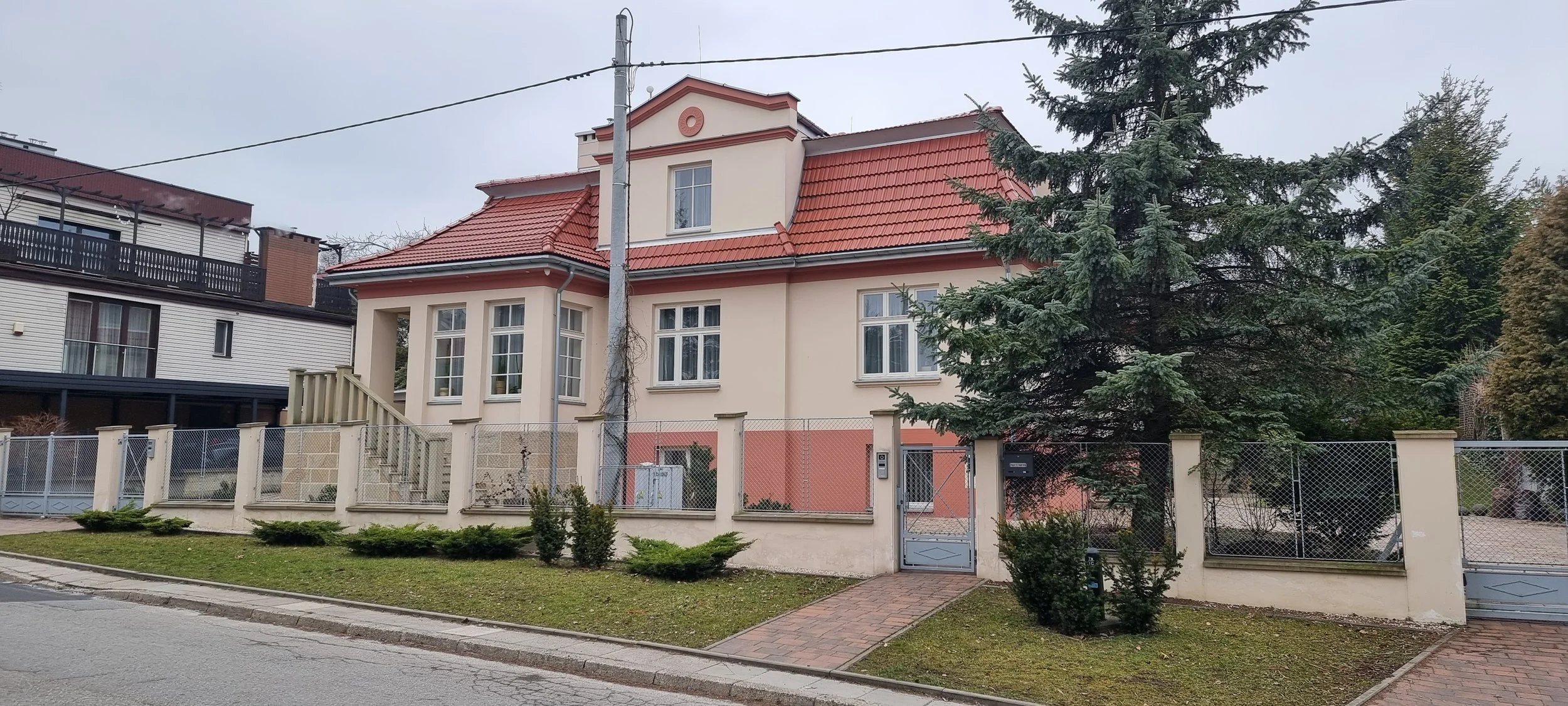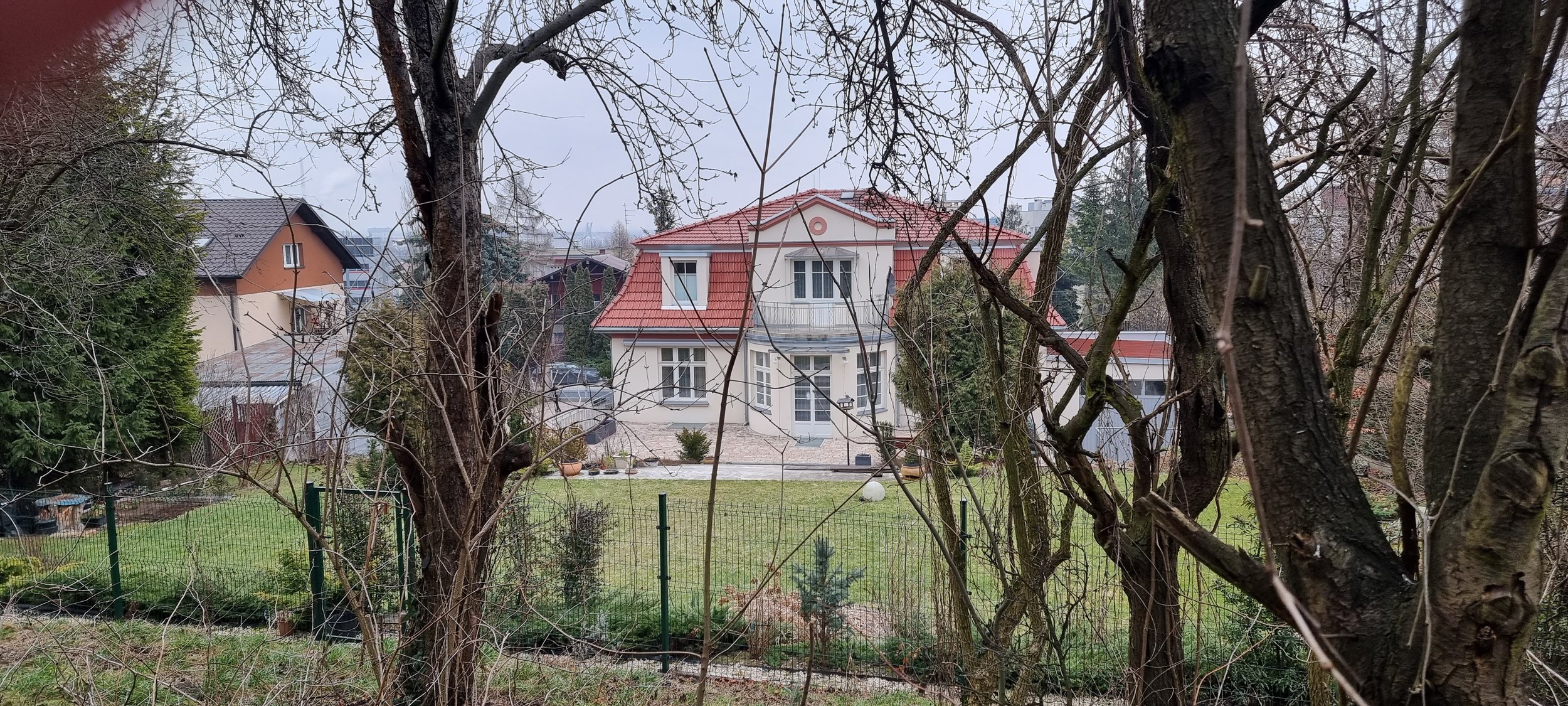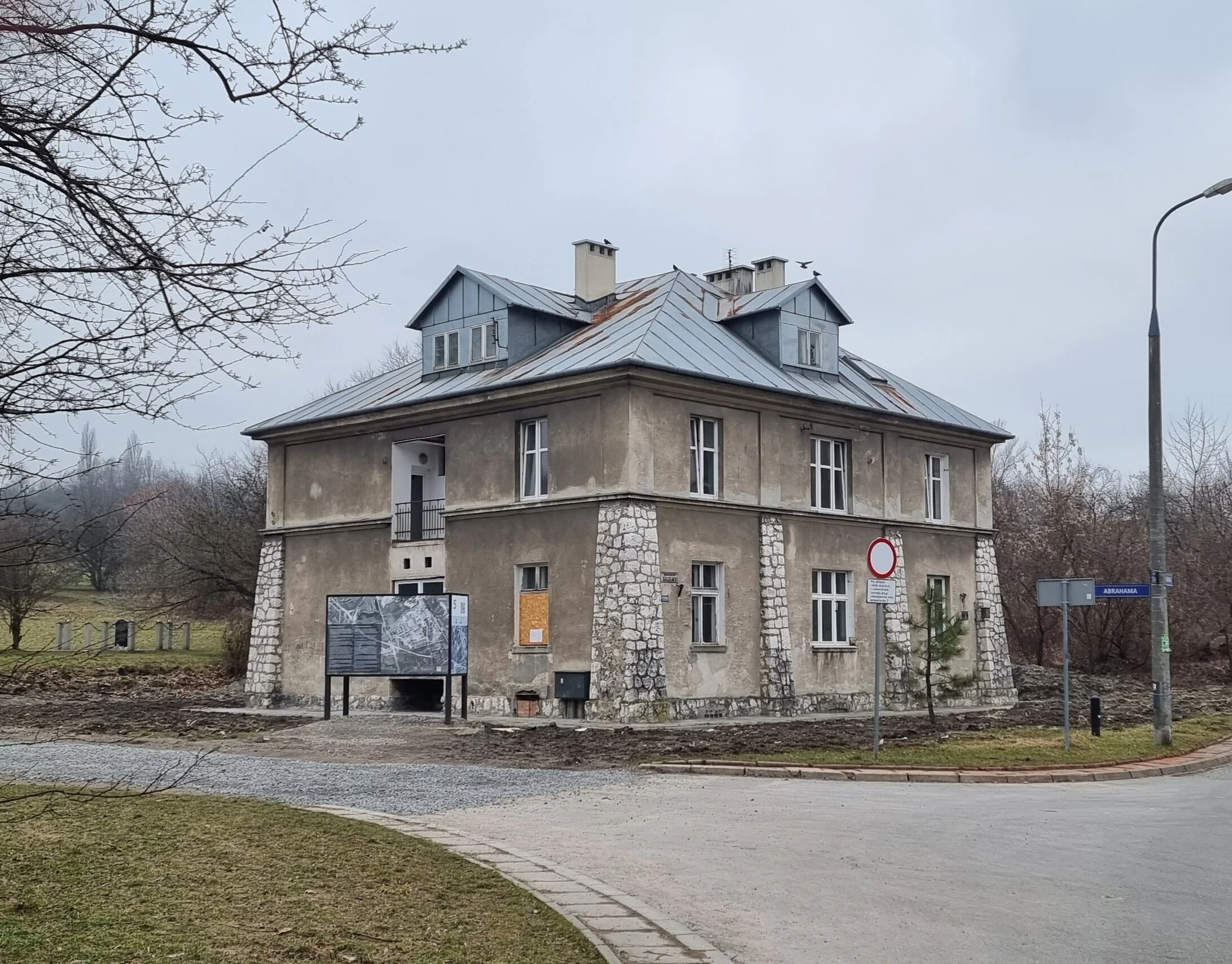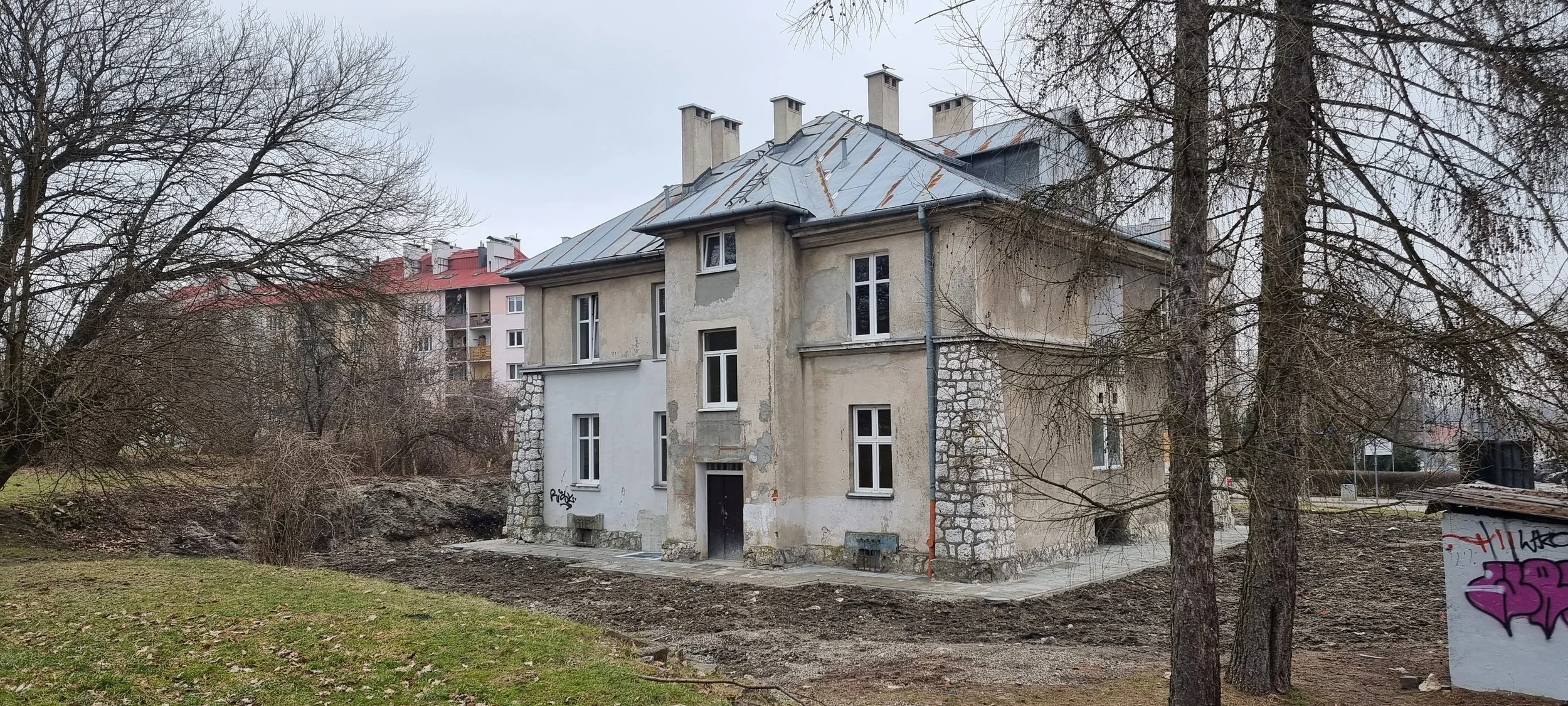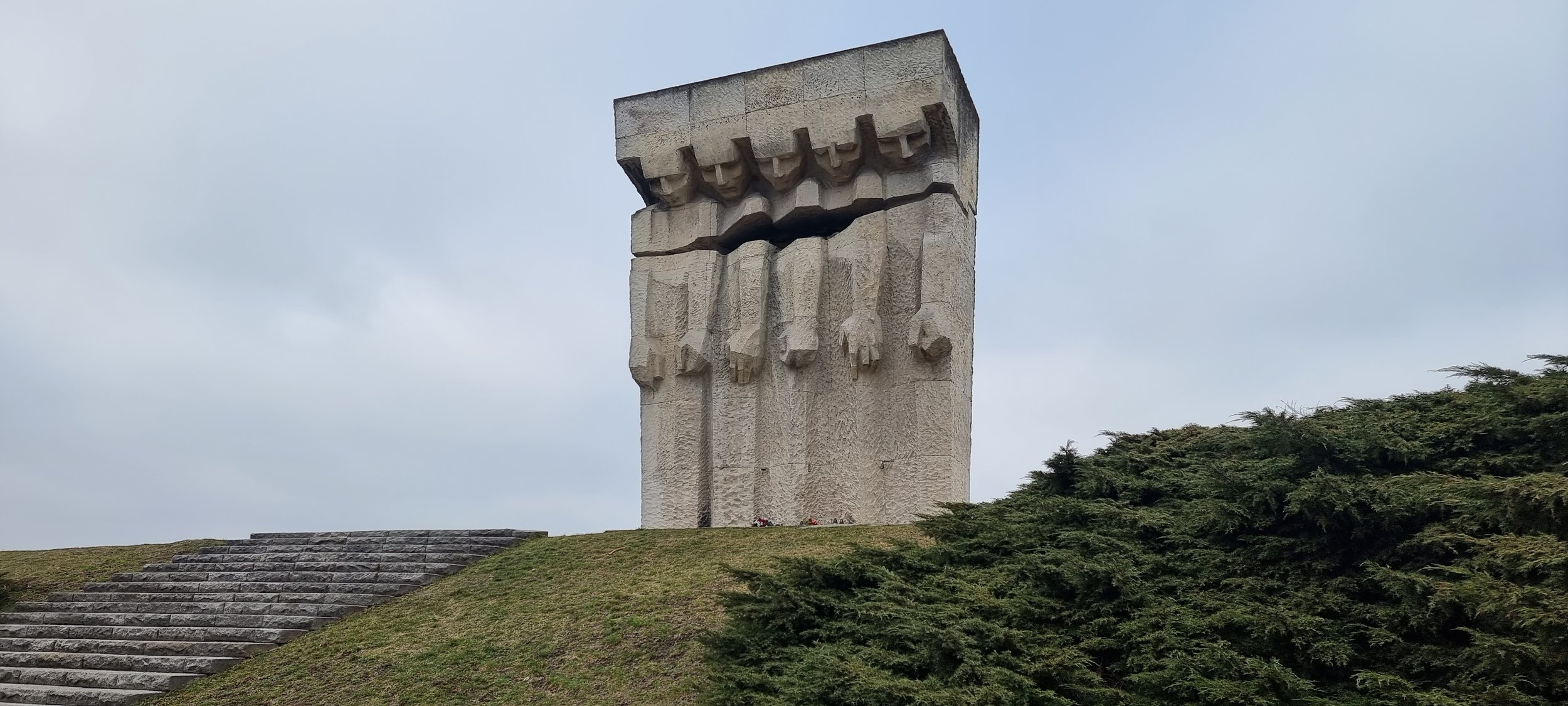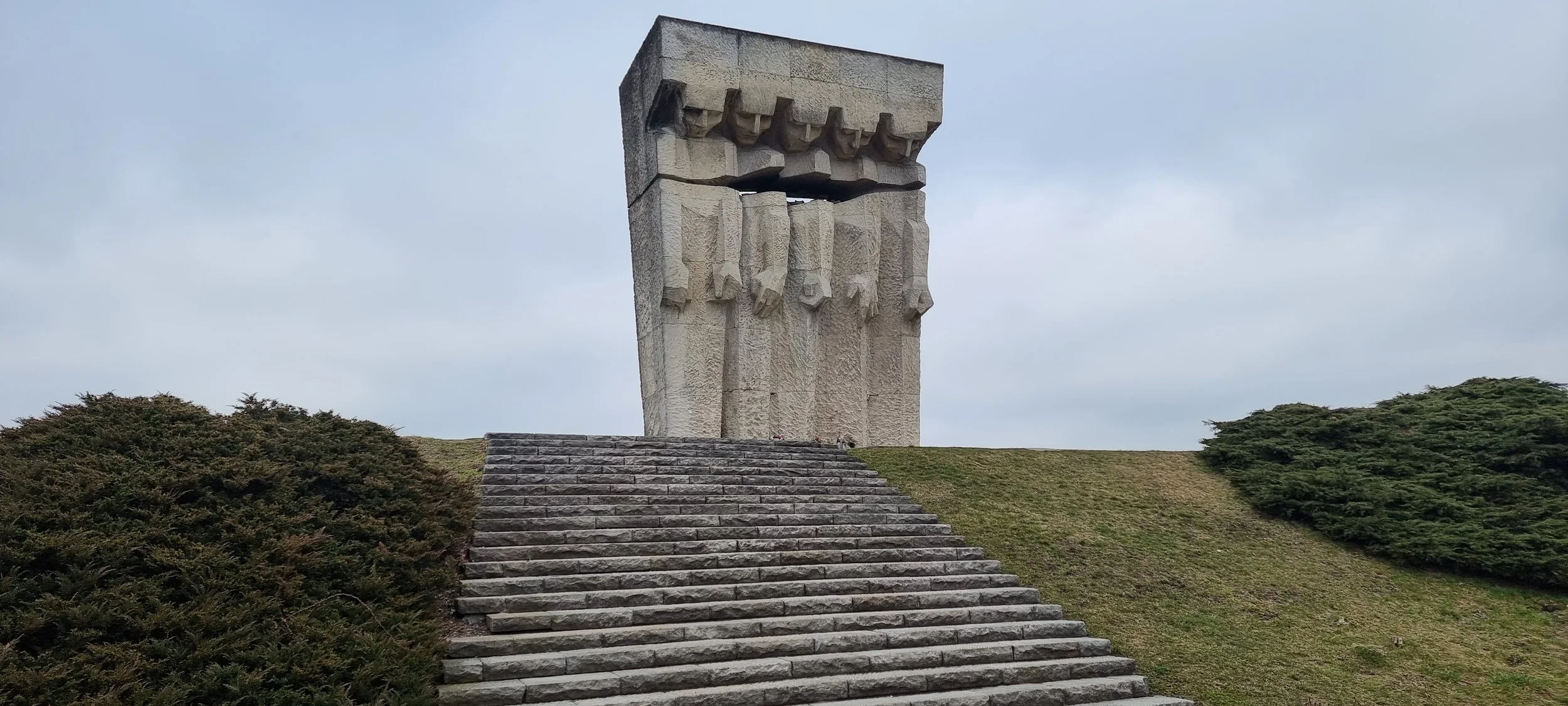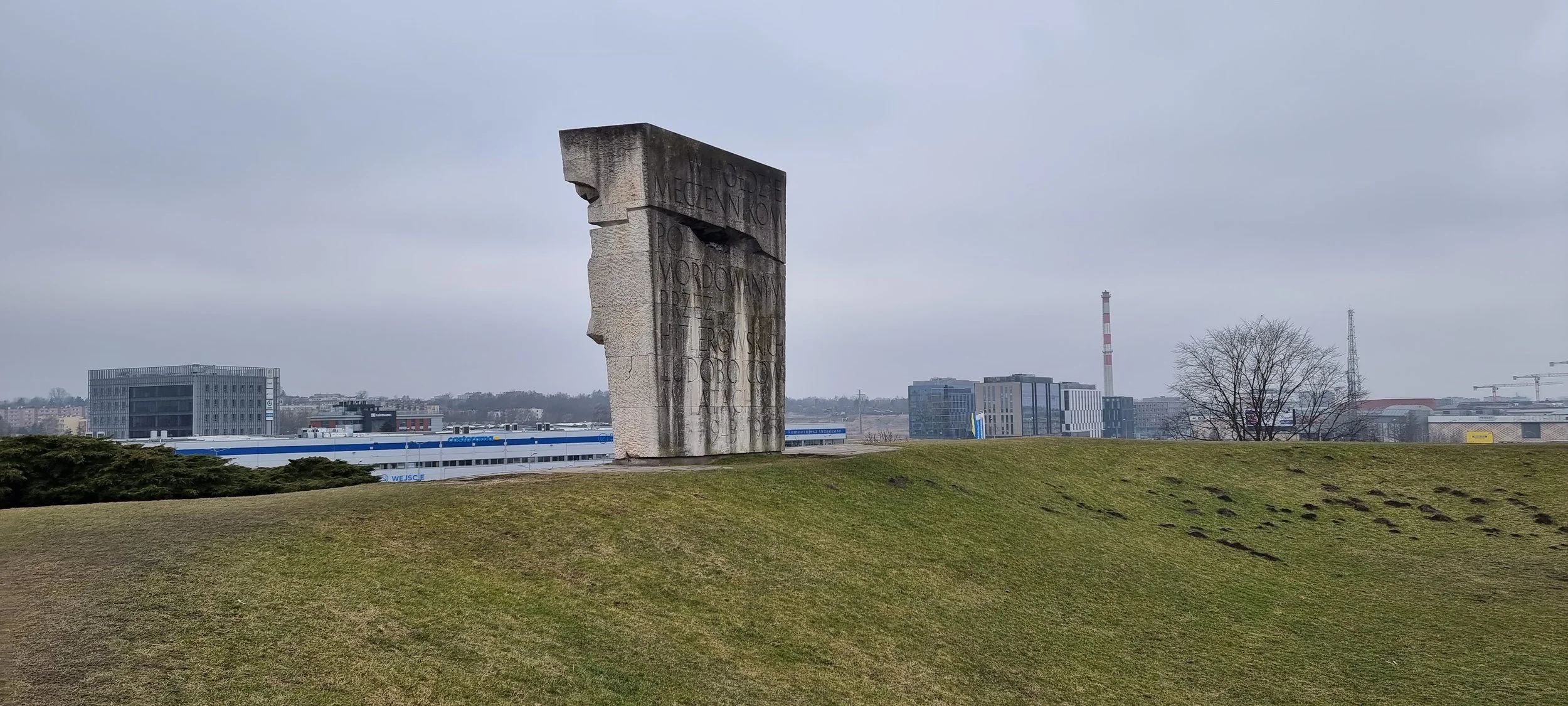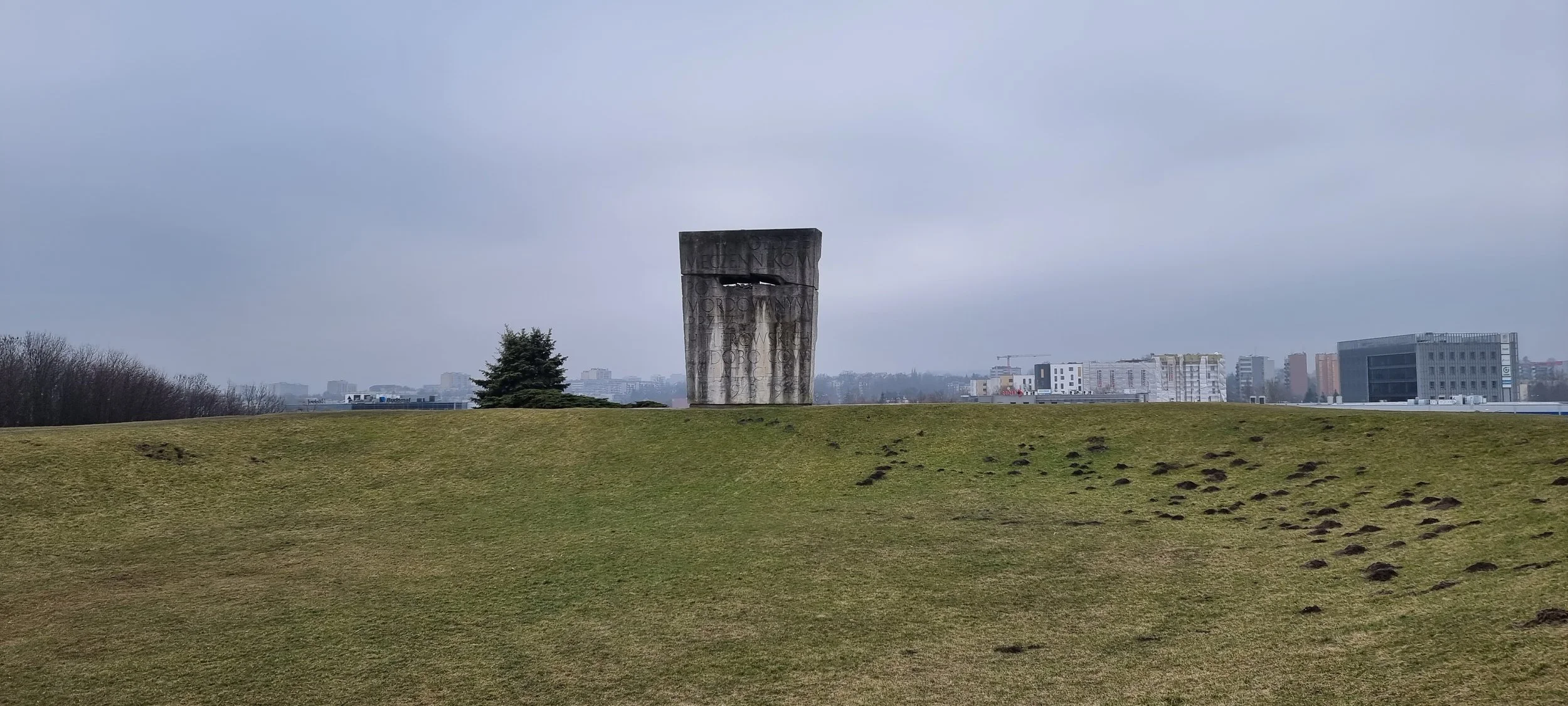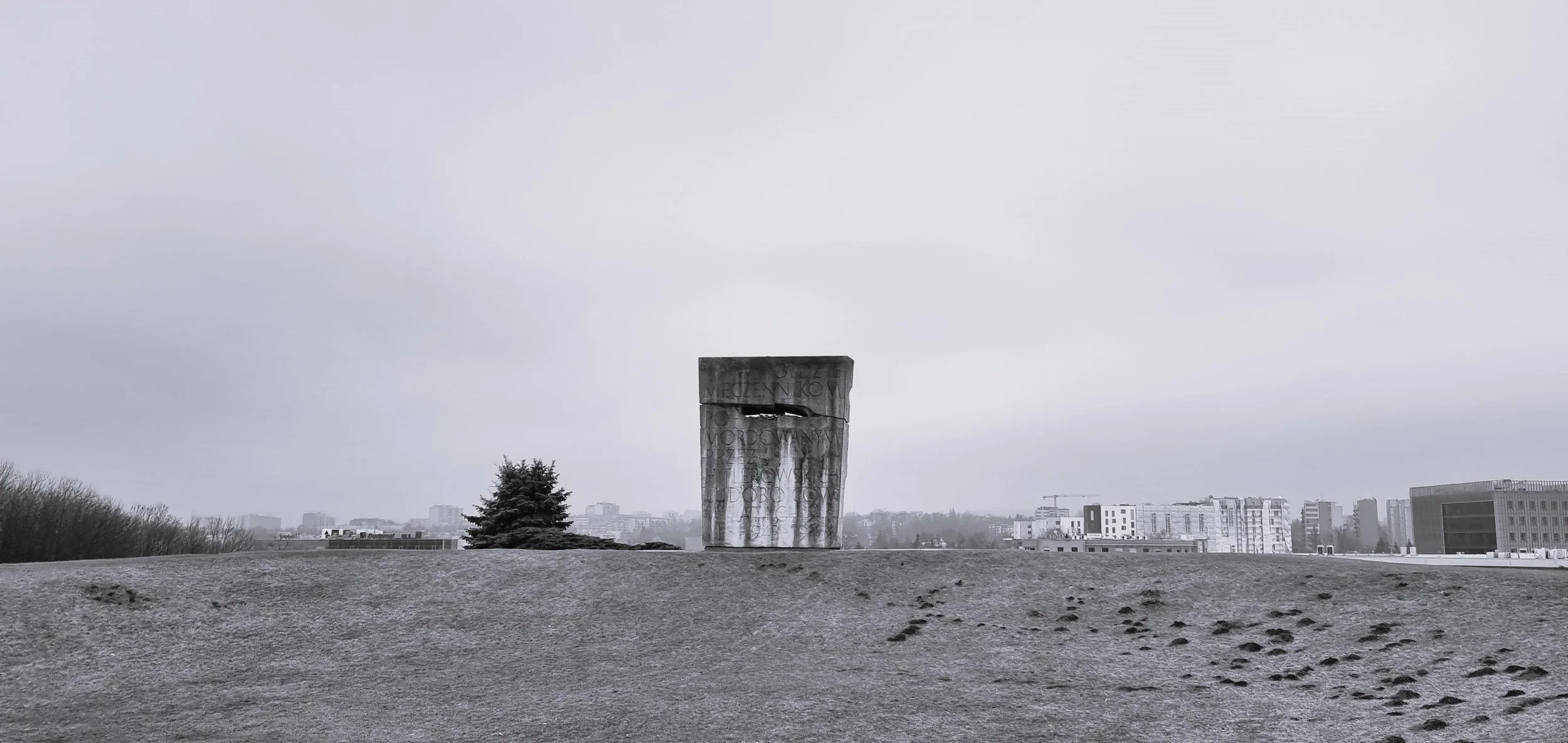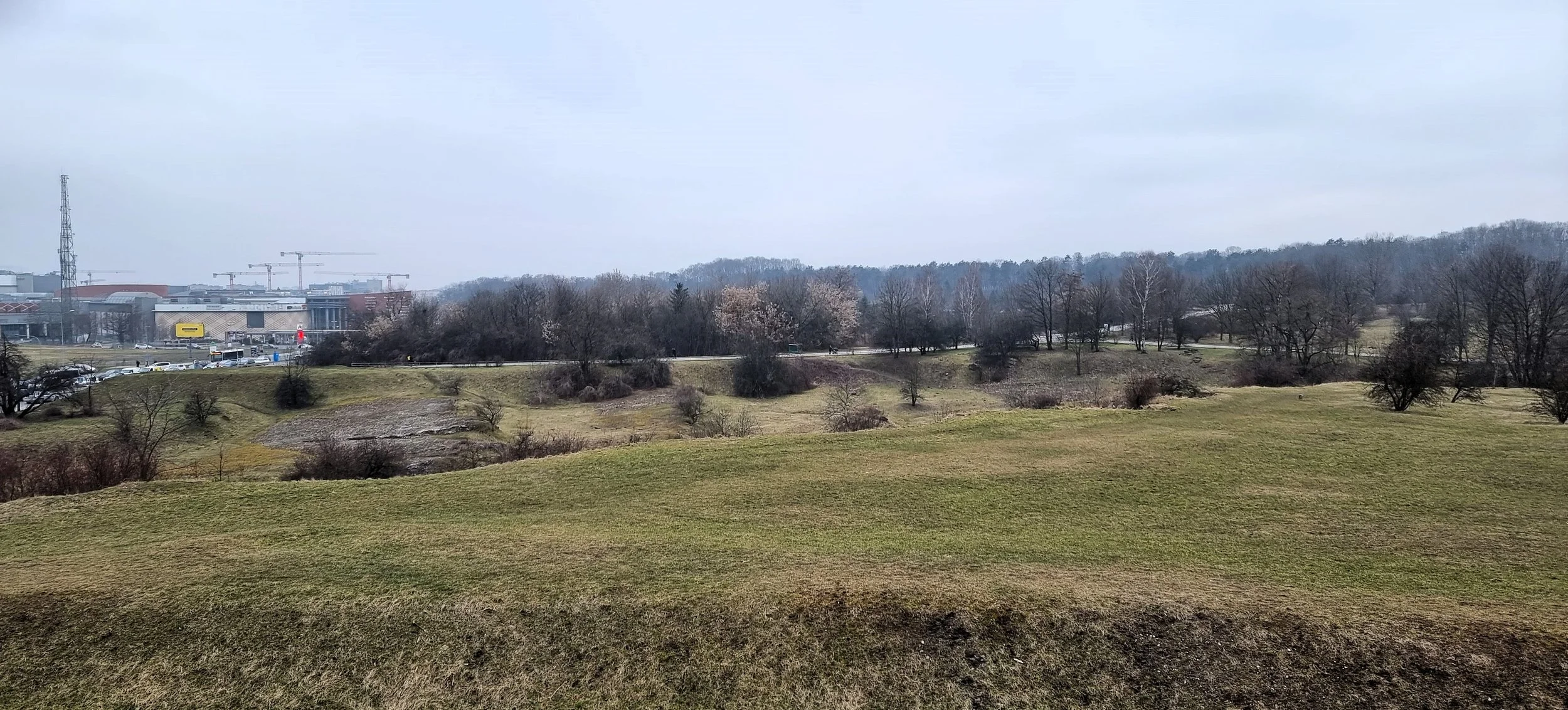
My Photos
Plasow Concentration Camp
Amon Goths House - Front. Amon Leopold Göth - (11 December 1908 – 13 September 1946) was an Austrian SS functionary and war criminal. He served as the commandant of the Kraków-Płaszów concentration camp in Płaszów in German-occupied Poland for most of the camp's existence during World War II.
The Rear of his house and balcony which was Amon Göth's villa in Płaszów. Although Göth was ruthless and would shoot at prisoners, he could not do so from this balcony as the terrain and the layout of the camp infrastructure precluded this. He used to step outside to hunt humans, with his Tyrolean hat marking his intentions. It was the signal for seasoned prisoners to attempt to hide
This house served as prison and torture site for the prisoners of concentration camp Plaszow from 1943 to 1945. It was used as the house of camp commander Amon Gothe in the film Schindler's List.
The Grey House was erected in 1925. It was occupied by the management of the cemetery, used by the Jewish religious community in Kraków, and by the Chevra Kadisha Burial Society. At the time of the operation of KL Plaszow, it contained the offices of the camp management and had a prison in its basement. After World War II, the building was used as a social and private apartment block.
The top of the hill just a short walk north from the surviving graves offers a panoramic vantage point over the camp stretching to the south. The landscaped area stretching east to west before you is the area of the former New Podgórze Jewish Cemetery. Recent excavations have helped to outline the area of the large assembly square in the middle, which was built directly over a mass grave from the early days of the camp. The Germans operated a steam shovel here, digging two massive graves in March 1943. The bodies of the thousands murdered during the liquidation of the ghetto were dumped here, and thousands more deemed a hindrance to the productivity of the camp, including many women and children, were forced to undress here and face the pit, before they were shot in the head.
According to eyewitnesses, dozens were murdered at this site daily until the summer of 1943, when 'H Górka' on the southern side of the camp became the preferred site for executions, the graves were levelled, and the camp assembly square was built over top of them. About 100 metres long, it was on this square that work briefings, ‘health inspections’ and dreaded selections took place. The barracks for Polish prisoners stood just on the left side of the assembly square, and rows of barracks for Jewish prisoners stood on the right side, then followed by utility buildings and a hospital.
Today there are very little remains of the former camp in Płaszów, except for a Monument to the Victims of Fascism erected in 1964. The monument presents five figures standing in a row, with their heads bent under the weight of a stone block and a breech across their chests.
After the war, a number of memorials were erected on the ”C Dolek” hill. The most famous architectural composition, established in 1964, is called ‘Pomnik Ofiar Faszyzmu’ (“Monument against Fascism”). Huge inscription in Polish on the back of the monument states: (” In memory of the martyrs killed during the German genocide of 1943-1945 ‘). In addition to a large-scale monument, another three memorials have been erected at the ”C Dolek” mass execution site. One of them, a large stone obelisk, was erected by the Jewish community of Krakow to perpetuate the memory of all the Jewish victims of Plaszow. The second one, a stone slab, installed in 2000, pays tribute to the women from Hungary who arrived in Plaszow before being sent to find death in the Auschwitz death camp. And the newest monument was installed in 2012 and honors the memory of the soldiers of the Polish army and resistance, who were also killed in the Plaszow camp (Arbeitslager Plaszow) during the German occupation.
Starting from September 1943, ”Chujowa Gorka” had become the main place of mass executions of prisoners in Plaszow and was used, under the personal supervision of Albert Hujar and Amon Goeth until mid-February 1944. The practice of burning bodies on an open fire was tested here for the first time in December 1943. When by February 1944, after the most intense period of executions, the pit was already filled with bodies, the Germans shifted the focus of the massacres to a nearby hill, which became known as ”C Dolek”.
The mass grave site on the ”Hujowa Górka” was leveled and the barracks were built. In the summer of 1944, an order was received to destroy the traces of the massacres on ”Chujowa Gorka” and on ”C Dolek” hill. Immediately after the war, a large wooden cross with barbed wire was erected at the site of the former massacre site and we can still observe it at Plaszow concentration camp today.
Looking across towards the Quarry -The presence of a quarry was one of the reasons for choosing a place to create a Plaszow labor camp in 1942. A number of the prisoners were occupied here, and the daily route through the main gate to bypass was an exhausting routine of work. Also, the SS and Kapo guards selected to monitor prisoners (often among criminals) often used to beat prisoners, and an unknown number of victims were killed right here, shot, or dropped down from abrupt cliffs of the quarry. The work was mainly occupied by the Poles and political prisoners, and the working day was divided into two shifts.
